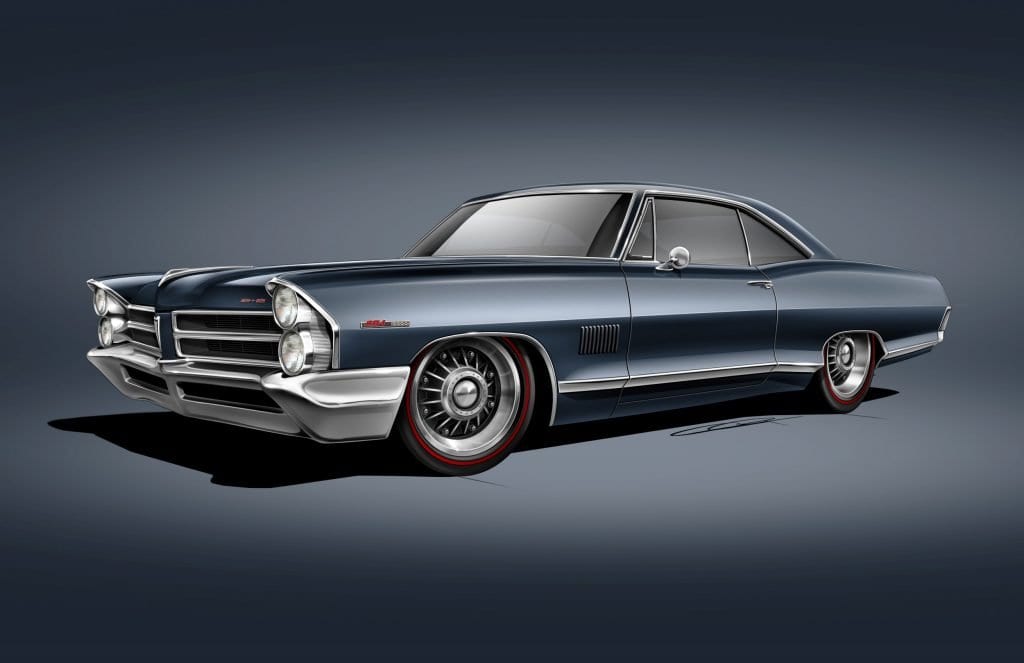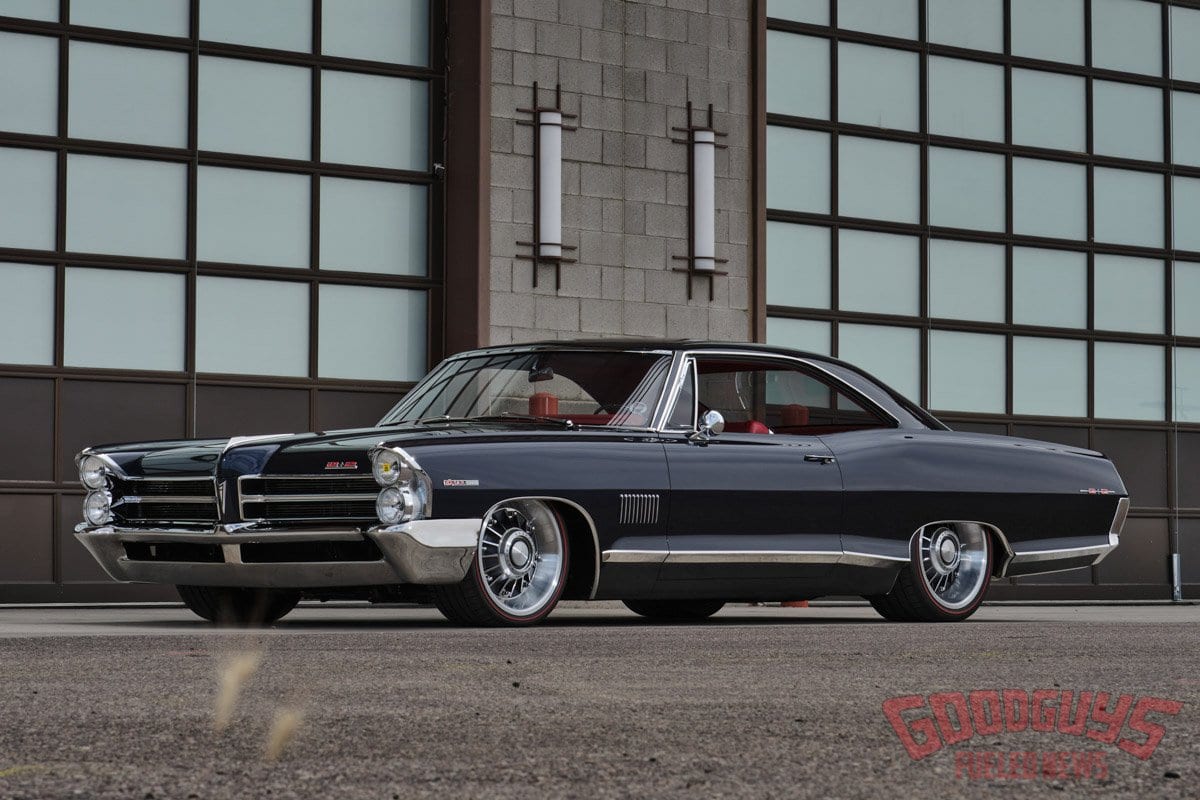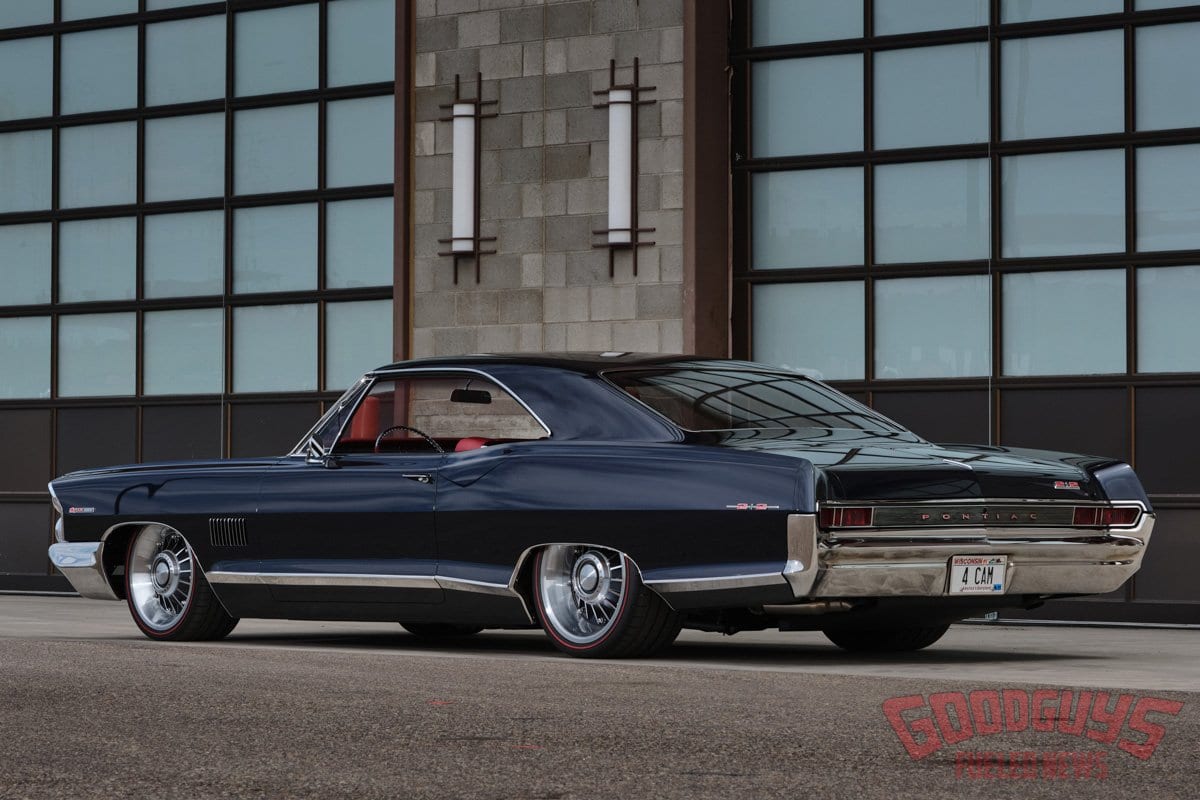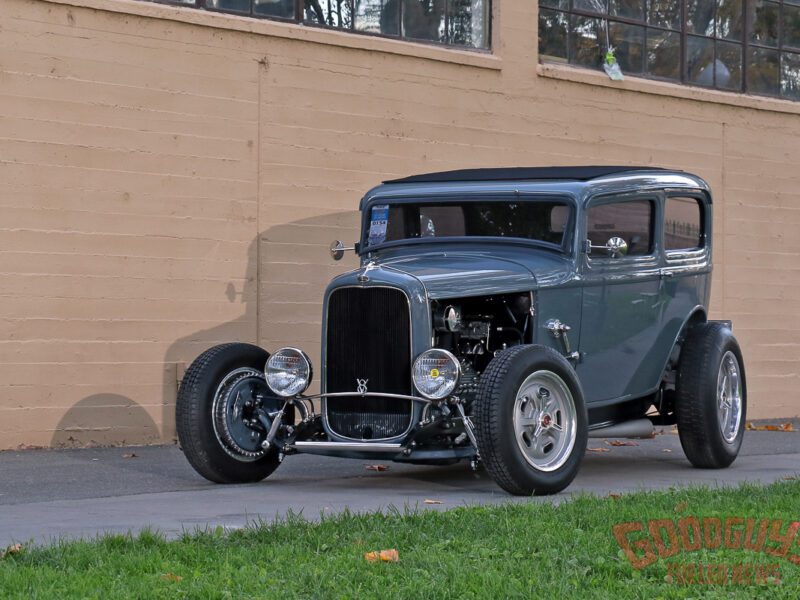Barry Blomquist’s Pontiac 2+2 Goes Well Beyond the Sum of Its Parts
It’s well known that the Pontiac GTO helped kick off the muscle car wars in the mid-1960s, but few people recall that Pontiac had more than one flavor – and size – of powerful vehicle in its showrooms. The division had gained a reputation for performance and packaged it in upscale full-size platforms, too, with cars like the Grand Prix and the lesser known Pontiac 2+2.

Launched in 1964 as a trim package for the Catalina, the Pontiac 2+2 became its own model in 1965 and was an attractive take on the redesigned Pontiac coupe body for that year. In addition to special trim, sporty bucket seats, console, and other appearance features, the 2+2 came standard with a 338hp, four-barrel-equipped 421c.i. V8 with dual exhaust and could also be had with Tri-Power carburetion or the HO engine package delivering even more power. It was a stylish balance of grace and vigor.

Barry Blomquist can attest to the appeal of the 2+2 – he bought one new in 1965 at the tender age of 19. Even though he only owned it for little more than a year, it’s a car he recalls fondly. “It was a real neat car,” Barry says, “The mid-’60s Pontiacs were beautifully designed and great performance cars. One of my favorite cars ever.”

Barry has been fortunate to own many cool hot rods and custom cars in recent years, including an incredible ’62 Corvette built by Roadster Shop that was Goodguys Street Machine of the Year in 2009. He had never gotten around to revisiting that mid-’60s Pontiac, though. “It was always too big of a car to do,” he says.
That changed a few years ago when he mentioned the 2+2 to Roadster Shop’s Jeremy Gerber, who quickly looked up the model online and was intrigued by the chiseled, linear design. “Within three hours of talking to him, Chris Gray [Roadster Shop’s in-house designer] sent me a rendering,” Barry says.

Rendering courtesy Roadster Shop
The illustration planted the seed, but Barry still didn’t have the car! Not to worry. Before long Jeremy had tracked down a ’65 Pontiac 2+2 via Craigslist in Las Vegas – just a few hours’ drive from where Barry and his wife have a home in Scottsdale, Arizona. Barry drove there the next day and found a clean, complete example with no detectable rust – the perfect candidate for the project that was gaining steam in his mind. The goal was simple in concept: “If this car was introduced today,” Barry says, “how would it be refined, powered, and reimagined with today’s engineering and quality?”

Jeremy and the Roadster Shop team were on the same wavelength and did what they do best as soon as Barry shipped the big Pontiac to Illinois: they stripped the car down to a bare shell and scanned the underside so they could design a custom Fast Track chassis. The all-new frame gave the big Pontiac the benefit of an independent rear suspension, not to mention a performance-bred front suspension, coil-over shocks, and 14-inch Baer brakes with six-piston calipers.

The team outdid itself on the wheels – one of the most-admired aspects of the build. Pontiac’s eight-lug sport wheels were perhaps the most distinctive factory wheels to come out of the ’60s. Designed and built by Kelsey Hayes with a goal of improving brake cooling, the finned wheels were both attractive and functional. Barry found an original 14-inch version, which was digitally scanned at Roadster Shop and scaled up to 19×10- and 20×12-inch sizes. Greening Auto Company machined the new three-piece versions, which use the eight outer lugs to secure the outside ring, inside rim, and centers, which then attach to the hubs using a conventional five-bolt pattern. Redline tires help complete the ’60s effect.

The engine was actually a key factor to setting this project in motion. Roadster Shop made headlines when it began selling the Mercury Racing SB4 engine – a 427c.i. screamer based on an LS7 block with proprietary four-valve aluminum heads with overhead cams. It makes 750hp and revs to 8,000rpm, but it’s also substantial in size. Barry thought it would be the perfect engine to fill the expansive 2+2 engine bay. Painted Pontiac turquoise, surrounded by custom engine panels, and backed by a Tremec six-speed, it’s got the brutish attitude befitting this big brute. “Everybody looks when you start it up,” Barry says. “It’s a killer sound.”

Very few modifications have been made to the made to the big body – the emphasis instead was on perfecting the lines and gaps before applying the BASF Glasurit finish, a rich, dark blue borrowed from a 2018 Aston Martin. Study the car closely, though, and you’ll find custom badges and other distinguishing details, plus beautiful chrome by Advanced Plating.
Those well-thought details are even more abundant on the interior. “That’s where the car really shines,” Barry says. Beyond the beautiful red leather upholstery by Avant-Garde Design, there are a host of custom-built and machined details like the shifter bezel, console trim, and emblems. The custom-built acrylic steering wheel has a great OEM feel, as do the one-off Dakota Digital gauges. Vintage Air keeps things cool, and the well-integrated stereo even manages to look at home in the console.

The completed car is both incredibly cool and difficult to categorize. It’s significantly modified, but everything is so well designed and integrated that it doesn’t really look “custom.” And it goes well beyond the conventional restomod recipe. Thankfully, Barry does a good job of summing up this well-conceived Pontiac 2+2.
“Reimagining is the correct word,” he says. “It’s supposed to be understated and elegant – a true gentleman’s hot rod.”

Photos by John Jackson


















